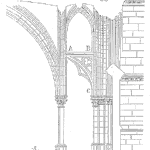
In an ideal world, our products and equipment will just work. They would not fail and would not require warranty claims, product returns, or repair.
Unfortunately, we make design mistakes, assembly errors, incur damage, or simply fail. The desired balance for most businesses is the cost of returns will not outweigh the profit of sales.














 Ask a question or send along a comment.
Please login to view and use the contact form.
Ask a question or send along a comment.
Please login to view and use the contact form.